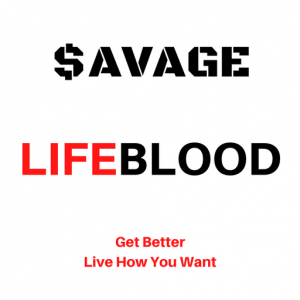When nobody is offering you constructive criticism, take an honest look in the mirror.
I’d hazard a guess that in philanthropy circles, people aren’t often calling each other out for being delusional. That’s why I wrote a book on it. It’s called Delusional Altruism. In a nutshell, it’s about human behaviors we’re not even aware of that get in the way of transformational change. It’s also about how to replace those behaviors with ways of working that are much more effective.
At a time of deep social anxiety as we grapple with a pandemic, police brutality, and systemic racial inequalities brought into even starker relief because of COVID-19, we need to be honest with ourselves about exactly where and how we are falling short. We don’t have the time or luxury to live in our own alternate reality.
While most philanthropists are eager to do the right thing, the hard part is changing something that you don’t even know you’re doing. So, here are three very common blind spots to recognize, and what to do instead. These changes will lead you to greater opportunities, more powerful networks, and increased resources and support. In other words, by doing these things you’ll pivot away from too much isolation, privilege and power, and create more inclusion and equitable impact.
1. You have a scarcity mentality. Instead, embrace abundance.
If you routinely do everything on the cheap, without investing in the infrastructure or long-term health of your organization and its people, you’re limiting yourself with restrictions instead of building yourself up with opportunities. Although your heart might be in the right place thinking more money will go to the cause, you are doing more harm than good.
This mentality often gets extended to grantees, with little to no funding offered for things that can help them grow in impact and effectiveness like operating expenses, leadership development, or technology. Having a stranglehold on opportunity creates a massive imbalance of power and leaves those on the ground spending their time grasping for limited resources.
An alternative to this reality is an abundance mindset. It’s not about throwing money around, but instead focusing on becoming stronger. Being proactively generous with things like your leadership, reputation, experience, and connections positions you and your collaborators to succeed in new ways. Taking risks, thinking big, and investing in your capacity and talent and that of your grantees are other ways to unleash opportunity and the almost limitless human capacity to create and implement solutions.
2. You’re extraordinarily busy with little to show for it. Instead, quickly find your North Star.
Even if you have means, trying to figure out which way to go is one of life and philanthropy’s significant challenges, especially when you want to make a substantial difference. So, absent a clear X-marks-the-spot, many organizations churn in relative solitude, putting out a mountain of good intentions and effort but without the corresponding impact. While many philanthropies are trying to rectify this with a strategy focused on long-term systemic change, progress still remains elusive.
So how do you find your way? Instead of spending an outsized amount of time deliberating in the board room to create a three-to-five-year strategic plan, make strategy a vital but more short-term tool. In addition to being more helpful for galvanizing your team and collaborators toward a common goal, when a crisis hits, your plan won’t become immediately obsolete. And you’ll have the ability and experience to quickly adjust your strategy when new circumstances arise.
Creating a clear strategy for the next year requires having a clear mission (your reason for being), organizational values (your guiding beliefs that define your culture and behavior), and a vision (the future you want to help realize). Once you have these in place, you can determine the short-term sprints that get you closer to specific and progressive waypoints along your journey. Then comes implementation—clearing out the things that are no longer a priority, assigning tasks, holding the team accountable, celebrating successes, learning, and adjusting your course.
3. You wield too much power. Instead, cede control and build trust.
You hold the resources that other people need. You are the Grantor and they are the grantee. Ultimately, it’s a set-up for limiting honesty and trusting relationships. In addition to a more isolating, stressful, and less fun environment for everyone, this power differential also sets philanthropies up for failure because they don’t have enough feedback loops to understand how efforts may be falling short. If you are trying to reduce racial inequities, it’s another way to perpetuate the status quo because you’re existing within a privileged and ignorant bubble. But you hold the power to remove these barriers.
You can do that by consciously working harder to build trusting relationships with your community, your grantees, essentially anyone who is a potential partner and collaborator in this work. Start by being your most authentic self. Own who you are and what you are good at and appreciate that same honesty in others. Say what you’ll do and do what you say. Establish expectations from engagement to dollars and then follow through. And admit mistakes. When we make ourselves vulnerable, people lean in with recognition and understanding. Saying you don’t know or figuring things out with your grantees as collaborators will change your relationships and what you can accomplish as a collective.
One key thing to remember is that relationship building takes time. Be patient. Find shared values and goals. Recognize power dynamics. And listen long and hard.
As Mahatma Gandhi said, “If you want to change the world, start with yourself.” By seeing clearly the ways we hold ourselves and our collaborators back and then consciously changing, we create new and better realities for ourselves and the people around us. In times like these, it’s this kind of momentum that will remake civil society into the inclusive engine for change we all know it has the potential to be.
This article was originally written for and published in Forbes.
If you need help implementing any of these ideas, let’s talk!
You can email me, call me at +1.800.598.2102, or schedule a call.
Navigate the unknown with confidence!
This free download will help you create a powerful giving plan in radically uncertain times.
So many funders I talk to lately are feeling overwhelmed (and exhausted) because conditions keep changing and it’s hard to plan for an unknown future. But while the future is uncertain, we don’t have to be. You can’t afford to “wait and see.” With these practical how-tos, you can pivot with purpose!
Listen to my latest podcast interview with Life Blood Podcast!
Recently I was interviewed on The Life Blood Podcast. I talked with George Grombacher, named one of the Top 100 Financial Advisors for 2020! We discussed how COVID has impacted nonprofits, why it’s time to break long held beliefs that nonprofits should operate on spartan budgets, and what each of us can do to become better with giving. For the difference making tip, scan ahead to 20:18!









